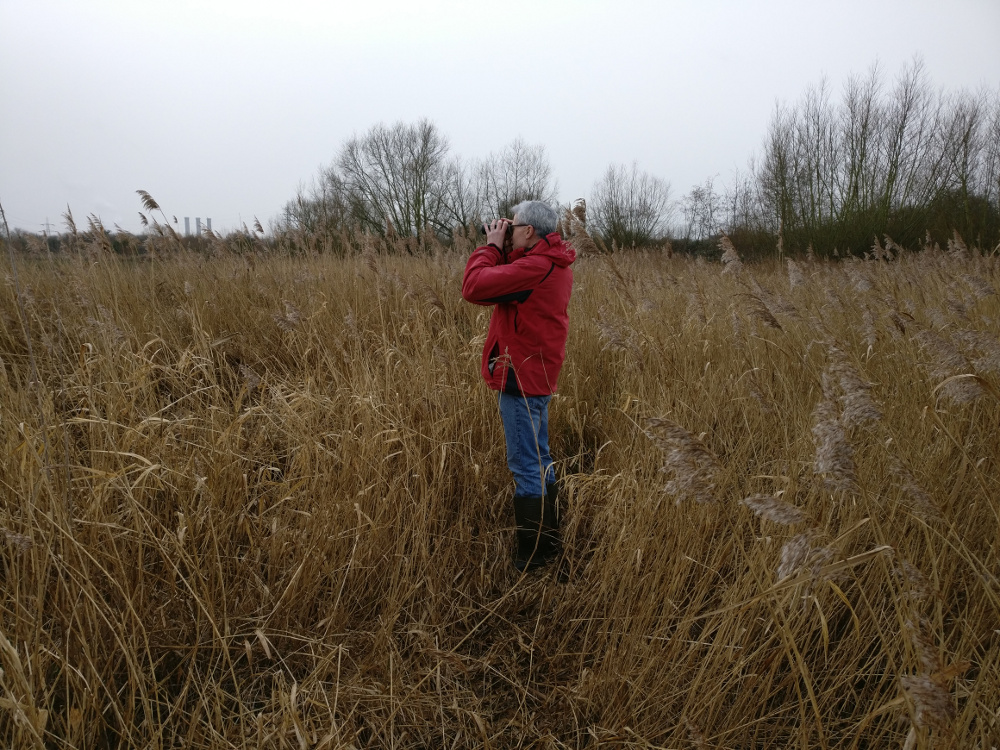Recent activities

Drabs and Dribs
...or, how counting Dunnocks can be fun! A report by Brian Milligan
To be honest, it sounded like a difficult sell: get up early on a freezing morning in December and count the dribs and drabs of the birding world: the Dunnocks, the Wrens and all the LBJs you normally can’t be bothered to raise the binoculars for.
All this while Hawfinches and Parrott Crossbills were posing temptingly just down the road.
But members of RMRG are a tough breed. So when Roger Emmens coined the acronym DriBS – which with a bit of imagination stands for Dry Land Bird Survey – we unselfishly answered the call to arms.
Well, six of us did.
Others were content to join in from a distance, by taking part in a sweepstake on the numbers of birds we would find. Ultimately it was an act of remote guesswork (some will claim skill) that was to triumph – but more of that later.
The DriBS count was designed to complement the Wetland Bird Survey (WeBS) taking place on the same day. So apart from anything else, we would know how many birds were present in total at Rye Meads on one winter’s morning.
Would there be more wetland birds, or dry land birds? In the event we counted 877 wetland birds and 771 land birds. In total there were 1,648 birds present, of 62 species. Put another way, that’s 635 kilos, or two-thirds of a tonne, of bird, according to Alan Harris. Honestly.
Perhaps most surprising was the number of thrushes present – 131 in total, including 86 Blackbirds. The Blue Tit total of 60 was a new site record! There was also a sprinkling of interesting winter visitors like Stonechat, Jack Snipe and Yellow-legged Gull. On the other hand, Greenfinch scored noticeably poorly, with just two birds present, and waterfowl numbers were down on recent years.
The table on the right lists the birds seen in order of magnitude.
The results suggest that the wintering population of some passerines at Rye Meads may be lower than the breeding population. However there may well have been significant under-counting.
Nevertheless the initial count should provide a reasonable baseline from which to judge future numbers and better assess trends in our winter populations.
So whose estimates came closest to the actual count, winning them the sweepstake? And whose guesses were woefully wrong? For the sake of discretion, no names perhaps.
But thanks to Toby Spall for suggesting that he or she with the worst guess should write it all up for a blog.
And next time we are in the pub, feel free to ask Matt Wallace for a drink.
| Black-headed Gull | 266 |
| Mallard | 124 |
| Coot | 112 |
| Wood Pigeon | 106 |
| Teal | 101 |
| Blackbird | 86 |
| Gadwall | 64 |
| Blue Tit | 60 |
| Dunnock | 48 |
| Feral Pigeon | 45 |
| Moorhen | 45 |
| Great Tit | 44 |
| Wren | 43 |
| Carrion Crow | 39 |
| Robin | 38 |
| Chaffinch | 35 |
| Shoveler | 31 |
| Snipe | 30 |
| Lapwing | 30 |
| Long-tailed Tit | 30 |
| Reed Bunting | 26 |
| Goldfinch | 25 |
| Magpie | 25 |
| Song Thrush | 21 |
| Tufted Duck | 21 |
| Redwing | 16 |
| Cetti's Warbler | 9 |
| Grey Wagtail | 8 |
| Fieldfare | 8 |
| Grey Heron | 7 |
| Stock Dove | 7 |
| Goldcrest | 7 |
| Little Grebe | 6 |
| Common Gull | 6 |
| Jay | 6 |
| Pied Wagtail | 6 |
| Mute Swan | 5 |
| Collared Dove | 4 |
| Stonechat | 4 |
| Chiffchaff | 4 |
| Bullfinch | 4 |
| Jack Snipe | 4 |
| Cormorant | 4 |
| Herring Gull | 4 |
| Lesser Black-backed Gull | 4 |
| Kestrel | 3 |
| Pheasant | 3 |
| Meadow Pipit | 3 |
| Wigeon | 3 |
| Pochard | 3 |
| Greenfinch | 2 |
| Kingfisher | 2 |
| Green Sandpiper | 2 |
| Sparrowhawk | 1 |
| Great Spotted Woodpecker | 1 |
| Starling | 1 |
| Blackcap | 1 |
| Jackdaw | 1 |
| Mistle Thrush | 1 |
| Yellow-Legged Gull | 1 |
| Little Egret | 1 |
| Water Rail | 1 |

[…] on site through the winter period – our so-called Dry land Bird Survey, nicknamed DriBS (see our blog on the first count in November). This for many species has constituted the first full counts since […]